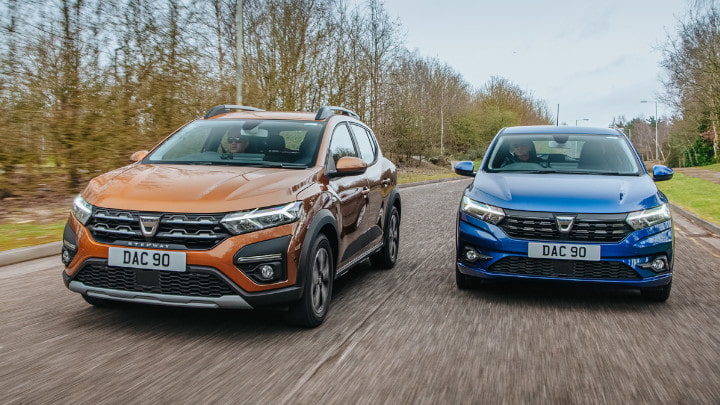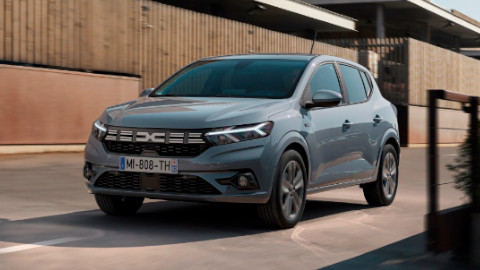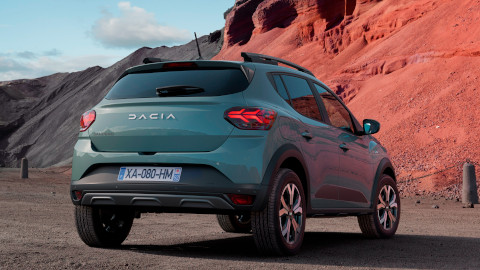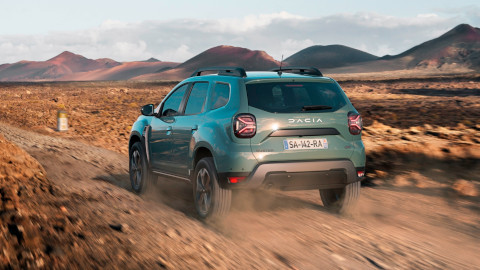First Drive Review: Dacia Sandero and Sandero Stepway
Highlights
- Unrivalled value
- Impressive practicality
- Low running costs
- Good levels of equipment for the price
Introduction
A new Dacia Sandero has arrived, and it’s not only retained its crown as Britain’s cheapest car, but it's also moved upmarket, and now comes with a powertrain option that gives it incredible range.
The Sandero is a new car that is available in both Sandero supermini and Sandero Stepway SUV forms, and can be had for less than the cost of many of its used equivalents.
As such, it comes with a full warranty that’s valid for three years, plus roadside assistance should that be necessary.
It’s a compelling proposition and underlines Dacia’s reputation as a no-nonsense brand that makes value for money a priority.
Engines and Driving Experience
The new Sandero is a huge step forward and is powered by a range of 3-cylinder 1.0-litre engines that include a bi-fuel powertrain that uses both LPG and petrol, giving it a range of more than 800 miles on full tanks.
With LPG costing around half the price of petrol, there are huge savings to be had. I tried the bi-fuel Sandero in top-grade Comfort specification, and saw an overall fuel consumption of 39.7mpg.
That’s more than 750 miles between fill ups, and the car has an 11-gallon petrol tank supplemented by an 8.8-gallon gas tank which is located where the spare wheel would go below the boot floor.
The filling nozzles are side by side behind the fuel flap and operation is seamless with LPG running selected via a push button on the dashboard.
Officially, the bi-fuel is rated at 52.3mpg on petrol and 39.8mpg from LPG, and we saw 41mpg and 32mpg respectively.
Emissions are 123g/km for the petrol engine and 109g/km when operating on gas, which for business buyers results in a 31 percent benefit in kind rate.
The bi-fuel conversion is factory fitted and makes Dacia the only mainstream car manufacturer to offer such a choice.
On the Stepway, it's not quite as fuel efficient as on the standard Sandero and is rated at 48.7mpg while running on petrol and 38.1mpg on gas, but the difference in everyday use is minimal.
On the performance front, the 99bhp engine in the bi-fuel is the most powerful of the three powerplants Dacia is using in the new Sandero which makes it the quickest of the lot.
The others see the engine developing either 89bhp or 64bhp, and all have official fuel returns of more than 50mpg. A CVT automatic transmission is also available on the 89bhp engine.
I also tried out the 89bhp engine in the Sandero and the Sandero Stepway, and neither are lacking, with the Sandero showing an average of 50.4mpg and the Stepway 49.2mpg during my test – very close to the official returns of 53.3mpg and 50.4mpg with emissions of 120g/km and 127g/km respectively.
Like the bi-fuel, the Sandero was in Comfort trim, and the Stepway in range-topping Prestige specification.
Design and Practicality
With Dacia being owned by Renault, the new Sandero is based on the latest Clio, and that quality shows throughout the car.
Chris Russon
There's no compromise on boot space either, with all models offering a minimum of 328 litres, expanding to 1,108 litres with the rear seats folded.
The Stepway with its pumped up bodywork – it sits more than half-an-inch higher than the regular model – has become the most popular version in the UK, and now comes with styling touches such as black body cladding, metal skidplates, and roof bars that can be turned into a roof rack capable of carrying up to 80kg.
Those add to its versatility, and although not quite as quick as the regular model – 0 to 62mph takes 12 seconds compared to 11.7 seconds – it looks nicely contemporary in these SUV-dominated days.
The new car also has almost an inch-and-a-half more legroom in the rear, which is best in class.
Equipment and Technology
Inside, the new car is a sea of change and not only does it feature full smartphone connectivity, it also comes with an 8-inch Media Nav display set at the top centre of the dash.
Safety features include emergency brake assist, blind spot warnings, and radar sensors to aid parking, as well as LED lighting and a reversing camera.
Other upmarket moves see the cabin coming with slim-line air vents, a fabric finish across the dash, and on the Stepway, orange detailing on the vents and in the seat stitching.
Summary
With its sharp new looks, added technology, and huge value for money, the Sandero is a splendid supermini at a city car price – and that adds up to make it Britain’s most affordable new car by some margin. The Sandero Stepway also impressed with its enhanced practicality and is a great option if you're searching for an SUV that comes at a fraction of the price of its competitors.
Overall, first impressions of the Sandero and Sandero Stepway were fantastic, and the upmarket yet still affordable move from Dacia is one that will prove popular amongst many.






